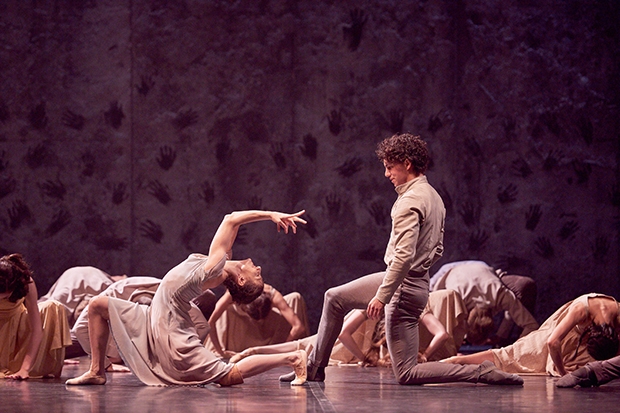Giselle endures in the collective imagination as a charming, sorrowful, supernatural love story. Premièred in Paris in 1841, this keystone romantic ballet concerns a peasant girl whose trust in a disguised nobleman destroys her fragile mind and heart. Little wonder, given the ballet’s mixture of sunniness, deception, spooky woe and redemption, that it retains a timeless grip or that the title role has become the ballerina equivalent of Hamlet.
English National Ballet will be at the London Coliseum in January performing Mary Skeaping’s Giselle, a chilling and historically accurate version originally mounted by the company in 1971. But first comes Akram Khan’s brand new take, another savvy commission by ENB’s artistic director Tamara Rojo.
Khan is celebrated for his mastery of classical Indian dance and often strikingly theatrical contemporary choreography. Although he worked successfully with ENB on part of the company’s award winning first world war programme, Giselle is his first crack at a full length ballet standard. The result is impressive: meaty and moody, not completely satisfying but a vivid, viscerally exciting showcase for a company ready to seize a fresh challenge. The production’s dramatic content renders it both ripe for the Halloween season and, more unexpectedly, a reflection on immigration issues.
Khan and his dramaturg, Ruth Little, have sharply refocused the ballet’s narrative without fully addressing all the questions arising from the changes they’ve rung. Their Giselle is no longer a naive village damsel but rather a spirited member of a migrant community (identified in the synopsis as ‘Outcasts’). These factory workers occupy one side of a huge grey wall; indeed, when the curtain rises they’re pushing en masse against this monumental divide. Behind it is Giselle’s lover — and, as we soon gather, future co parent. Albrecht is still a member of an oppressive ruling class (described here as ‘Landlords’) whose handful of other representatives swan about in fancy dress haute couture.
The production’s somewhat ponderous sociopolitical slant doesn’t always join up with the human dimension. Nor was I entirely convinced by Giselle’s emotional instability. The character’s famous mad scene may now have greater scope, but the price is diminished impact; parts of her breakdown felt remote or lugubriously drawn out. Excluding Albrecht, there are only four Landlords served by two attendants. Given the numbers, why don’t the Outcasts revolt?
It’s easy, however, to overlook misgivings and get swept up by the sheer stagecraft: the powerful imagery supported by sensational dancing. Enhanced by Mark Henderson’s darkly radiant lighting, Tim Yip’s designs are fabulously strong. The same could be said about Vincenzo Lamagna’s propulsive score, which potently layers instrumental melodies from Adolphe Adam’s original music with ominous machinated sounds.
Khan’s choreography, meanwhile, possesses both an earthy ensemble drive and a sensitivity to individual character expression. The Outcasts’ tribal gallop is breath catching, and the seething, organism like whirlpool of bodies that protectively surround Giselle during her fatal meltdown memorable. Alina Cojocaru, as the first cast Giselle, does what great actors do with text: she finds a motive for every move. She and Isaac Hernández’s Albrecht share two duets, one a playfully tactile, tender frolic underpinned by melancholy and the other an almost necro erotic farewell. In addition, Khan creates for Albrecht a superb solo at the top of Act Two that unleashes all of this privileged man’s mocking delirium; this surprising new mad scene makes total sense.
There’s also great work by Cesar Corrales, whose Hilarion is a sleekly ambiguous operator with a real fire in the belly, and Stina Quagebeur as Myrtha, a truly minatory Queen of the Wilis. The latter are creepy and cruel: long haired, towering on point and each wielding (but also, bizarrely, holding between the teeth) a bamboo rod. As the embodiment of forgiveness, the spectral Giselle realises that the Wilis are another form of hierarchy as cruel as the Landlords. Saving Albrecht from them is her way of breaking a cycle of violence, injustice and abuse.






Comments